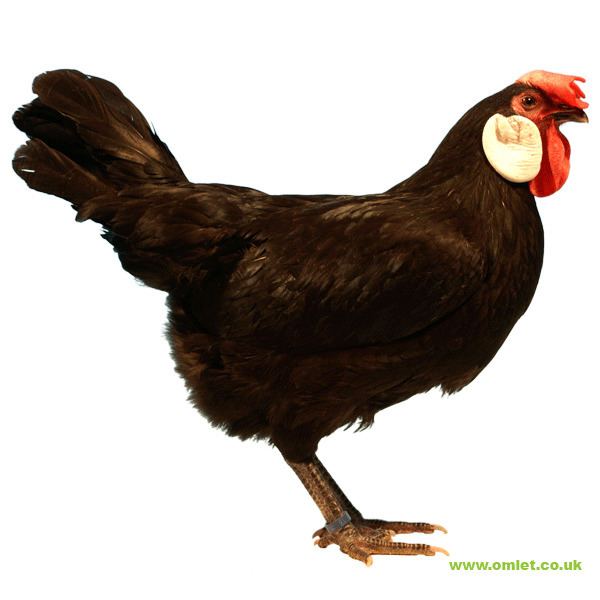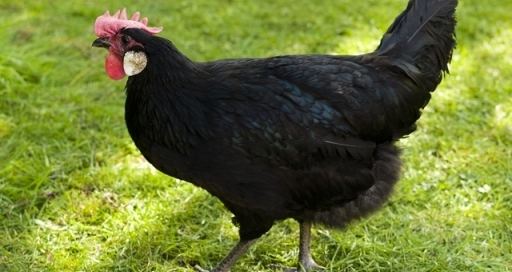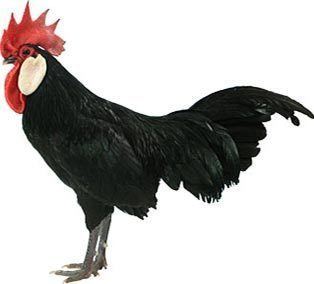Country of origin Spain Comb type single; rose Primary use ornamental Egg size Large Egg color White | Distribution worldwide APA Mediterranean Egg production (annual) 120 Temperament Noisy, Flighty | |
 | ||
Other names Catalan: Gallina de MenorcaSpanish: MenorquinaMinorka Weight Male: Minorca, measured: 2.834 kgUK Standard: 3.20–3.60 kgUK bantam: 960 gFemale: Minorca, measured: 2.210 kgUK Standard: 2.70–3.60 kgUK bantam: 850 g Recognized variety Single Comb White, Rose Comb White, Rose Comb Black, Single Comb Black, Single Comb Buff Similar | ||
Minorka black minorka schwarz lipsia schau leipzig 2013
The Minorca, Catalan: Gallina de Menorca, Spanish: Menorquina, is a breed of domestic chicken originating in the Mediterranean island of Minorca, in the Balearic Islands to the south-east of Spain. It is a well-known exhibition bird in many countries of the world, but in the island of Minorca is an endangered breed and considered to be at risk of extinction.
Contents

History

The international type of Minorca was created by the British from indigenous Minorcan birds. This process began during the British occupation of the island from 1708 to 1783, but It is not clear if it took place there or in Britain. It is likely that it began in Minorca and continued in Britain, where imports of chickens from Minorca in the 1780s are documented.:662 By about 100 years later, the breed (which was considered a variety of the "Spanish") was common and long-established in Devon and Cornwall, in the south-west of England, where it was highly regarded as an egg-laying breed. It had been exhibited in Paris, under the name "Barbezieux", and was widespread in the world.:662 It reached Germany in the late 1870s, and was added to the Standard of Perfection of the American Poultry Association in 1888.

Various attempts were made to modify some of the physical characteristics of the breed, including body size (by cross-breeding with the Langshan), the size of the comb and earlobes, and the position of the neck.:662 None of these attempts had any beneficial effect on its abilities as an egg-layer.

Until recently the Minorca was uncommon in its island of origin. In 2004 a project to assess the numbers and quality of the remaining stock in the farms and country houses of the island was completed at the Centre de Capacitació i Experiències Agràries de Mao,:663 the agricultural college of Mahón, and the results published in 2006. A breeding flock selected for quality and consisting of 30 cocks and 150 hens was established at the college, and 600 birds distributed to local breeders.:663
In 2012 a programme of conservation and improvement of the Minorca breed was approved, to be managed by the Associació de Gallines Menorquines, the association of breeders of the chicken in the island.
The Minorca is listed by the Ministerio de Agricultura, Alimentación y Medio Ambiente, the Spanish ministry of agriculture, among the indigenous breeds at risk of extinction. The population in Spain at the end of 2012 was 460 birds; all were in the Balearic Islands.
Characteristics
In Spain, the Minorca is a breed of medium size, with uniformly glossy greenish-black plumage. Cocks weigh about 2.8 kg and hens about 2.2 kg.:662 The back is sloping and the tail almost horizontal. The comb, face and wattles are bright red. The comb is smooth and single, with six well-defined points; it is erect in cocks, but in hens falls to one side. The wattles are large, smooth and fine-textured. The earlobes are white, very large, and oval or almond-shaped. The skin is white and the legs black or dark slate-coloured.
The British Poultry Standards call for a higher weight, in the range 2.70–3.60 kg for both cocks and hens. In the United Kingdom blue and white colour varieties of the Minorca are recognised, and in some other countries there are buff and barred varieties. Rose-combed variants are recognised in several countries, not including Spain. There is also a Minorca bantam, which in some countries may also be rose-combed.
Use
The Minorca is often kept as an ornamental breed. As a farm bird, it is an egg-laying breed. Hens start laying early, at about 26 weeks, and give about 120 white eggs per year.:662 Eggs weigh more than 65 g from the 57th week of the life of the hen.:662
